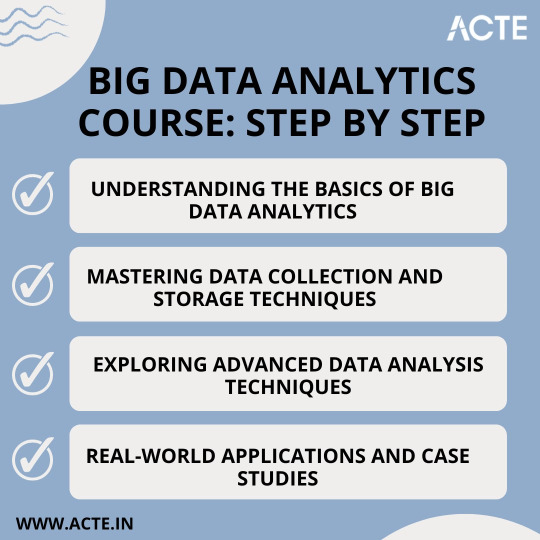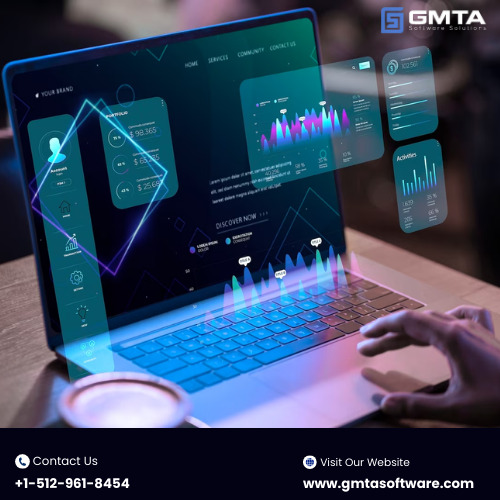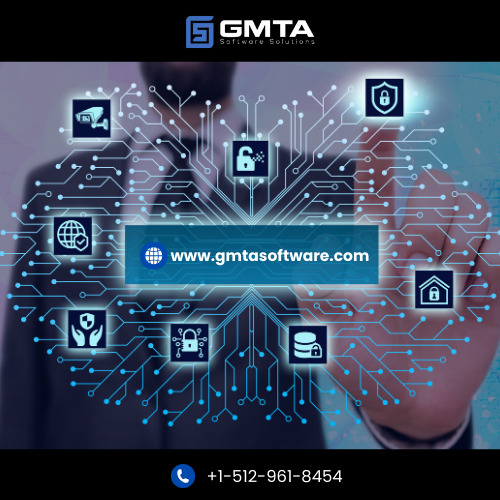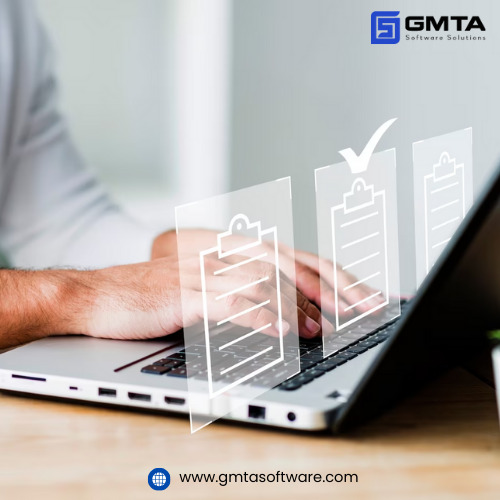#Time-Sensitive Networking Market analysis
Explore tagged Tumblr posts
Text
Time-Sensitive Networking Market Growth: Key Players and Competitive Landscape for 2025
The global time-sensitive networking (TSN) market was valued at USD 355.7 million in 2023 and is forecasted to expand to USD 3,399.1 million by 2030, registering a compound annual growth rate (CAGR) of 41.6% between 2024 and 2030. This robust growth is driven by rapid technological progress.

Advancements in the Industrial Internet of Things (IIoT) and Industry 4.0 are fueling demand for reliable, time-critical data communication. TSN technology enhances network performance by minimizing latency and jitter, which is vital for industrial automation processes. The incorporation of TSN in autonomous vehicles and smart factories is accelerating its adoption across various industries. Leading corporations such as Cisco Systems, Inc., Intel Corporation, and Siemens are heavily investing in TSN to optimize operational efficiency. This investment is catalyzing the development of new standards and protocols, further expanding TSN capabilities. As industries increasingly digitize their operations, the demand for TSN is expected to grow substantially, driving market expansion.
The need for synchronized, deterministic communication in sectors like automotive, aerospace, and manufacturing is propelling the TSN market forward. In the automotive sector, TSN supports advanced driver-assistance systems (ADAS) and in-vehicle infotainment, ensuring safety and reliability. Aerospace applications rely on TSN to manage complex avionics networks with precise timing. In manufacturing, TSN enables real-time control and monitoring of machinery, boosting efficiency and productivity. The healthcare industry is also adopting TSN for critical medical applications that require accurate and timely data transmission. The broad applicability of TSN across diverse industries underscores its significant market potential, which is expected to expand as these sectors continue to innovate.
Order a free sample PDF of the Time-Sensitive Networking Market Intelligence Study, published by Grand View Research.
Key Market Trends & Insights
In 2023, North America held the largest market share at 36.2%, supported by a well-developed infrastructure that facilitates advanced networking technologies like TSN. This includes high-speed internet, reliable data centers, and extensive telecommunications networks essential for real-time communication.
By component, the switches segment dominated with 20.0% of the global revenue in 2023. TSN switches play a critical role in managing network traffic with precise timing and synchronization, enabling deterministic data transmission for applications such as industrial automation and autonomous vehicles.
The IEEE 802.1AS (Timing and Synchronization) standard accounted for the largest revenue share in 2023. This standard is crucial for ensuring precise timing and synchronization across devices, which is necessary for real-time data transfer in applications like industrial automation and autonomous vehicles.
The industrial automation segment was the leading application in 2023, generating the highest revenue share. This sector benefits from TSN by achieving precise synchronization and deterministic communication, which are essential for low-latency, reliable data transmission in automation environments.
Market Size & Forecast
Market Size in 2023: USD 355.7 Million
Projected Market Size in 2030: USD 3,399.1 Million
CAGR (2024-2030): 41.6%
Largest Market in 2024: North America
Fastest Growing Market: Asia Pacific
Key Companies & Market Share Insights
Leading companies have primarily focused on product launches, technological developments, expansions, mergers and acquisitions, partnerships, and collaborations to increase their market presence. For example, in July 2023, Advantech introduced the EKI-8510G managed TSN switch, certified by the CC-Link Partner Association for compatibility with CC-Link IE TSN. This product is tailored to meet the demanding needs of industrial automation by delivering high-speed, real-time communication and supporting the integration of IT and OT networks. The launch exemplifies the growing adoption of TSN solutions in industrial environments and highlights their role in accelerating digital transformation in manufacturing and related sectors.
Key Players
Advantech Co., Ltd.
Belden Inc.
Cisco Systems Inc.
HMS Networks
Microchip Technology
Mitsubishi Electric
Mouser Electronics
NATIONAL INSTRUMENTS CORP.
PROFIBUS Nutzerorganisation e.V.
Spirent Communications.
Texas Instruments Inc.
TTTech Group
Explore Horizon Databook – The world's most expansive market intelligence platform developed by Grand View Research.
Conclusion
The global time-sensitive networking market is poised for exceptional growth over the coming years, driven by increasing industrial digitization and the rising demand for reliable, real-time data communication across various sectors such as automotive, aerospace, manufacturing, and healthcare. Technological advancements, strong investments from major industry players, and the development of robust standards like IEEE 802.1AS are enabling widespread TSN adoption. With North America leading the market and Asia Pacific emerging as the fastest-growing region, the future outlook for TSN technology is highly promising, underpinned by its critical role in enabling Industry 4.0 and autonomous systems worldwide.
#Time-Sensitive Networking#Time-Sensitive Networking Market#Time-Sensitive Networking Industry#Time-Sensitive Networking Market Size#Time-Sensitive Networking Market Share#Time-Sensitive Networking Industry Research#Time-Sensitive Networking Industry Trends#Time-Sensitive Networking Market Analysis#Time-Sensitive Networking Market Forecast
0 notes
Text
When Microsoft named its new Windows feature Recall, the company intended the word to refer to a kind of perfect, AI-enabled memory for your device. Today, the other, unintended definition of “recall”—a company's admission that a product is too dangerous or defective to be left on the market in its current form—seems more appropriate.
On Friday, Microsoft announced that it would be making multiple dramatic changes to its rollout of its Recall feature, making it an opt-in feature in the Copilot+ compatible versions of Windows where it had previously been turned on by default, and introducing new security measures designed to better keep data encrypted and require authentication to access Recall's stored data.
“We are updating the set-up experience of Copilot+ PCs to give people a clearer choice to opt-in to saving snapshots using Recall,” reads a blog post from Pavan Davuluri, Microsoft's corporate vice president for Windows and devices. “If you don’t proactively choose to turn it on, it will be off by default.”
The changes come amid a mounting barrage of criticism from the security and privacy community, which has described Recall—which silently stores a screenshot of the user's activity every five seconds as fodder for AI analysis—as a gift to hackers: essentially unrequested, preinstalled spyware built into new Windows computers.
In the preview versions of Recall, that screenshot data, complete with the user's every bank login, password, and porn site visit would have been indefinitely collected on the user's machine by default. And though that highly sensitive data is stored locally on the user's machine and not uploaded to the cloud, cybersecurity experts have warned that it all remains accessible to any hacker who so much as gains a temporary foothold on a user's Recall-enabled device, giving them a long-term panopticon view of the victim's digital life.
"It makes your security very fragile,” as Dave Aitel, a former NSA hacker and founder of security firm Immunity, described it—more charitably than some others—to WIRED earlier this week. “Anyone who penetrates your computer for even a second can get your whole history. Which is not something people want.”
In addition to making Recall an opt-in feature, Microsoft’s Davuluri also writes that the company will make changes to better safeguard the data Recall collects and more closely police who can turn it on, requiring that users prove their identity via its Microsoft Hello authentication function any time they either enable Recall or access its data, which can require a PIN or biometric check of the user’s face or thumbprint. Davuluri says Recall’s data will remain encrypted in storage until the user authenticates.
All of that is a “great improvement,” says Jake Williams, another former NSA hacker who now serves as VP of R&D at the cybersecurity consultancy Hunter Strategy, where he says he's been asked by some of the firm's clients to test Recall's security before they add Microsoft devices that use it to their networks. But Williams still sees serious risks in Recall, even in its latest form.
Many users will turn on Recall, he points out, partly due to Microsoft’s high-profile marketing of the feature. And when they do, they’ll still face plenty of unresolved privacy problems, from domestic abusers that often demand partners give up their PINs to subpoenas or lawsuits that compel them to turn over their historical data. “Satya Nadella has been out there talking about how this is a game changer and the solution to all problems,” Williams says, referring to Microsoft's CEO. “If customers turn it on, there’s still a huge threat of legal discovery. I can’t imagine a corporate legal team that’s ready to accept the risk of all of a user’s actions being turned over in discovery.”
For Microsoft, the Recall rollback comes in the midst of an embarrassing string of cybersecurity incidents and breaches—including a leak of terabytes of its customers' data and a shocking penetration of government email accounts enabled by a cascading series of Microsoft security slipups—that have grown so problematic as to become a sticking point given its uniquely close relationship with the US government.
Those scandals have escalated to the degree that Microsoft's Nadella issued a memo just last month declaring that Microsoft would make security its first priority in any business decision. “If you’re faced with the trade-off between security and another priority, your answer is clear: Do security,” Nadella's memo read (emphasis his). “In some cases, this will mean prioritizing security above other things we do, such as releasing new features or providing ongoing support for legacy systems.”
By all appearances, Microsoft's rollout of Recall—even after today's announcement—displays the opposite approach, and one that seems more in line with business as usual in Redmond: Announce a feature, get pummeled for its glaring security failures, then belatedly scramble to control the damage.
20 notes
·
View notes
Text

Deep Dives into Tech and Digital Growth Strategies
In an era of rapid technological advancements and evolving business landscapes, understanding the nuances of tech-driven strategies is essential for sustained growth. Companies today must leverage cutting-edge technologies and innovative digital growth strategies to stay competitive. This article takes a deep dive into the world of technology and digital strategies, highlighting how businesses can harness them to achieve their full potential.
Tech Innovation: The Catalyst for Business Evolution
Innovation in technology is reshaping industries, from manufacturing and healthcare to retail and financial services. Businesses that embrace tech innovations can unlock new opportunities and create unique competitive advantages.
Automation and AI: Automation tools and artificial intelligence (AI) are driving efficiency, reducing human errors, and freeing up resources for more strategic tasks. Companies that adopt AI-driven decision-making processes gain valuable insights and predictive analytics.
Cloud Computing: Cloud-based solutions offer businesses scalable, cost-effective options for data storage and software deployment. Cloud technologies facilitate remote work, enhance collaboration, and provide data accessibility from any location.
Internet of Things (IoT): IoT is transforming industries by connecting devices and enabling real-time data collection and analysis. Businesses can leverage IoT to monitor operations, optimize workflows, and improve customer experiences.
5G Connectivity: The rollout of 5G networks is enabling faster communication and data transfer. This enhanced connectivity paves the way for innovations in areas like telemedicine, augmented reality, and autonomous vehicles.
Digital Marketing Strategies for Sustainable Growth
Digital marketing is at the heart of modern business strategies. To stand out in a crowded market, businesses must adopt targeted and innovative marketing tactics.
Search Engine Optimization (SEO): SEO is critical for improving online visibility and driving organic traffic. Businesses should focus on creating high-quality content, optimizing for keywords, and building authoritative backlinks to enhance search engine rankings.
Content Marketing: Content is king when it comes to building brand authority and engaging audiences. Businesses should invest in creating informative, relevant content that addresses customer pain points and provides solutions.
Social Media Engagement: Social media platforms are powerful tools for building brand awareness and fostering community engagement. Consistent posting, audience interaction, and strategic advertising can amplify a brand’s reach.
Data-Driven Marketing: Analyzing marketing performance data allows businesses to make informed decisions and refine strategies. By leveraging analytics tools, businesses can identify trends, understand customer behaviors, and optimize campaigns for better results.
Personalization: Today’s consumers expect personalized experiences. Businesses that use data to tailor their offerings and communication to individual preferences are more likely to build lasting relationships with customers.
Cybersecurity: Protecting Digital Assets
As businesses become more reliant on digital technologies, cybersecurity is paramount. Cyber threats can compromise sensitive data, disrupt operations, and damage reputations. To safeguard digital assets, businesses must implement robust cybersecurity measures.
Multi-Layered Security: Implementing multi-layered security protocols ensures that businesses are protected from various attack vectors. This includes firewalls, intrusion detection systems, and endpoint protection.
Data Encryption: Encrypting sensitive data both in transit and at rest protects it from unauthorized access.
Regular Audits: Conducting regular security audits helps identify vulnerabilities and ensures that security measures are up-to-date.
Employee Training: Human error is a common cause of data breaches. Educating employees on cybersecurity best practices can reduce the risk of phishing attacks and other social engineering tactics.
Customer-Centric Tech Solutions
Understanding and prioritizing customer needs is key to business growth. Tech innovations can enhance customer experiences and build long-term loyalty.
Customer Relationship Management (CRM) Systems: CRM systems help businesses manage customer interactions and provide personalized experiences. By analyzing customer data, businesses can tailor their offerings and improve satisfaction.
Chatbots and Virtual Assistants: AI-powered chatbots offer 24/7 customer support, answering queries and resolving issues in real-time. These tools enhance customer service while reducing operational costs.
Omnichannel Experiences: Today’s consumers interact with businesses across multiple channels. Providing a seamless, consistent experience across all touchpoints—whether online, in-store, or on mobile—is essential for customer satisfaction.
Tech Integration for Operational Efficiency
Integrating technology into core business processes can streamline operations, reduce costs, and improve overall efficiency.
Enterprise Resource Planning (ERP) Systems: ERP systems integrate various business functions into a unified platform, improving visibility and coordination across departments.
Project Management Tools: Digital project management platforms enable teams to collaborate, track progress, and meet deadlines efficiently.
Supply Chain Optimization: Advanced technologies like IoT and blockchain can enhance supply chain transparency, improve inventory management, and reduce delays.
Sustainable Growth with Tech Partnerships
Partnering with tech solution providers can accelerate business transformation and growth. Collaborating with experts allows businesses to access specialized knowledge and cutting-edge technologies without investing heavily in in-house resources.
Scalability: Tech partnerships enable businesses to scale operations as needed, adapting to market demands without significant disruptions.
Innovation: Partnering with tech innovators ensures that businesses stay ahead of industry trends and adopt new technologies as they emerge.
Looking Ahead: Future Trends in Tech and Digital Growth
The tech landscape is constantly evolving, and businesses must stay agile to remain competitive. Emerging trends like artificial intelligence, quantum computing, and edge computing are set to redefine industries. By staying informed and embracing change, businesses can position themselves for long-term success.
Conclusion
Tech4Biz Solutions is committed to empowering businesses with innovative tech solutions and digital growth strategies. Whether it’s leveraging advanced technologies, optimizing marketing efforts, or enhancing customer experiences, Tech4Biz helps businesses unlock new possibilities. By diving deep into the world of tech and digital strategies, companies can fuel growth, drive innovation, and stay ahead of the curve in an ever-changing business landscape. Visit Tech4Biz Solutions to learn more about how we can help transform your business.
5 notes
·
View notes
Text
Top Trends Reshaping the GCC Data Centre Landscape This Year

Unraveling the Exponential Rise of the GCC Data Center Market Ecosystem
The Gulf Cooperation Council data center market stands at the forefront of regional digital transformation, propelled by surging demand for resilient IT infrastructure, AI integration, and edge computing capabilities. As we project forward, the GCC data center market-valued at USD 5.87 billion in 2024—is set to experience a seismic expansion, reaching an anticipated USD 33.05 billion by 2031, growing at a CAGR of 12.3%. This trajectory is underpinned by high-performance computing demands, smart city initiatives, sovereign digital strategies, and the accelerated adoption of hybrid cloud frameworks.
Request Sample Report PDF (including TOC, Graphs & Tables): https://www.statsandresearch.com/request-sample/40593-data-center-industry-analysis
Technological Drivers Reshaping GCC’s Digital Backbone
Edge Computing and AI: Catalysts of Infrastructure Evolution
The fusion of edge computing and artificial intelligence is redefining the physical and operational contours of data center infrastructure. These technologies enable real-time data processing, lower latency, and enhanced bandwidth efficiency—essentials in a region increasingly reliant on IoT, autonomous systems, and immersive media.
Edge Data Centers are proliferating across urban and remote industrial zones to reduce network latency and support mission-critical applications in telecom, logistics, and smart utilities.
AI-powered infrastructure management enables predictive maintenance, workload optimization, and autonomous scalability, aligning with sustainability goals and uptime assurance.
Cloud-Native Transformation and Multi-Cloud Adoption
Enterprise and government adoption of hybrid and multi-cloud ecosystems is fueling demand for flexible, modular, and scalable data centers. Organizations are rapidly transitioning from legacy systems to cloud-native architectures that support containerization, orchestration (e.g., Kubernetes), and zero-trust security postures.
Get up to 30%-40% Discount: https://www.statsandresearch.com/check-discount/40593-data-center-industry-analysis
Key GCC Data Center Market Segments and Growth Benchmarks:
Data Center Types: Segment-Wise Expansion
Enterprise Data Centers dominate current deployment, with projections reaching USD 12.69 billion by 2031. These are favored by banks, government entities, and large corporations for security, compliance, and customization.
Edge Data Centers, expected to grow at a CAGR of 13.3%, are essential for latency-sensitive operations—especially in retail, telecom, and autonomous industries.
By Component: IT Infrastructure Leads the Stack
IT Infrastructure, valued at USD 7.27 billion in 2024, comprises compute, storage, and networking units. The sector will nearly double by 2031, reaching over USD 16 billion.
Management Software emerges as the fastest-growing component (13.9% CAGR), driven by demand for automated orchestration, resource analytics, and energy optimization.
Tier Standards: Reliability as a Strategic Differentiator
Tier III Data Centers remain the enterprise standard for redundancy and availability, offering a balance between cost-efficiency and resilience.
Tier IV Data Centers are witnessing increased adoption in financial and defense sectors due to their fault-tolerant architectures and unmatched uptime assurance.
Enterprise Demand: SME Acceleration and Enterprise Stability
Large Enterprises will remain dominant consumers, owing to vast operational scale and stringent compliance requirements.
SMEs, however, will outpace in growth (12.8% CAGR), increasingly leveraging colocation and cloud-managed data services to fuel innovation and agility.
Industry Verticals: IT and Telecom Anchor Growth
IT & Telecom, accounting for USD 3.83 billion in 2024, drive GCC data center market dominance through robust connectivity and digital service demand.
Retail, with the highest CAGR of 13.3%, is expanding rapidly due to rising e-commerce penetration and digital payment infrastructure.
Geographic Landscape: Market Expansion Across the GCC
United Arab Emirates: The Regional Nucleus of Digital Infrastructure
With a GCC data center market value of USD 4.91 billion in 2024, the UAE leads in regional data center development. Its progressive regulatory landscape, free zones (like Dubai Internet City), and focus on AI strategy and cloud governance position it as the premier data hub.
Saudi Arabia: Hyper-Scaling Through Vision 2030
Saudi Arabia's Vision 2030 initiatives are accelerating digital infrastructure deployment. Projected to grow at a CAGR of 12.7%, the Kingdom is investing in hyperscale facilities and AI-integrated networks to empower its Smart Nation ambitions and government digital services.
GCC Data Center Market Forces and Challenges
GCC Data Center Market Growth Drivers
Proliferation of smart city initiatives, such as NEOM and Masdar.
National cloud-first policies and rising government investments.
Accelerated digital adoption across BFSI, healthcare, and manufacturing.
Constraints and Strategic Hurdles
Acute skills shortage in high-density data center operations.
Escalating OPEX due to cooling and power requirements in desert climates.
Regulatory complexities and varying data sovereignty frameworks across GCC nations.
Key Players and Strategic Developments
Major incumbents and rising challengers are reshaping the competitive landscape through aggressive capital expenditures, greenfield projects, and regional collaborations.
Major Developments
Batelco’s White Space Data Center in Bahrain, developed with Almoayyed Contracting Group, introduces a high-density, energy-efficient facility adjacent to a solar farm—marking a regional milestone in sustainable infrastructure.
Ooredoo’s USD 1 billion investment, backed by QAR 2 billion in financing, aims to scale their data center capacity beyond 120MW, with AI and cloud infrastructure at the core.
GCC Data Center Market Leaders
Equinix – Expanding interconnection hubs and hybrid cloud onramps.
Khazna Data Centers – Driving hyperscale growth with government-backed investment.
STC Solutions and Mobily – Enhancing regional content delivery and 5G edge integration.
Microsoft Azure – Strengthening sovereign cloud services and AI deployment.
Strategic Outlook and Market Forecast
The GCC data center market is rapidly transitioning from traditional IT support roles to becoming central to digital economic competitiveness. As sovereign data strategies, AI integration, and decentralized architectures take hold, the region’s data center industry is set to become one of the fastest-growing globally.
By 2031, Tier IV and Edge Data Centers will define market leadership.
Public-private partnerships, sovereign fund allocations, and energy innovations will drive infrastructure resilience and global competitiveness.
Green data centers, leveraging renewable energy and liquid cooling technologies, will gain prominence amid growing environmental mandates.
Purchase Exclusive Report: https://www.statsandresearch.com/enquire-before/40593-data-center-industry-analysis
Final Word
We are entering a transformative era in the GCC’s digital infrastructure ecosystem. The convergence of policy, technology, and private capital is accelerating the rise of a hyperconnected, data-driven Gulf economy. Those who invest now in future-ready, AI-integrated, edge-enabled data center architecture will lead the next chapter of the region’s digital revolution.
Our Services:
On-Demand Reports: https://www.statsandresearch.com/on-demand-reports
Subscription Plans: https://www.statsandresearch.com/subscription-plans
Consulting Services: https://www.statsandresearch.com/consulting-services
ESG Solutions: https://www.statsandresearch.com/esg-solutions
Contact Us:
Stats and Research
Email: [email protected]
Phone: +91 8530698844
Website: https://www.statsandresearch.com
1 note
·
View note
Text
Where Can You Find the Cheapest Dedicated Server Deals in Los Angeles?
Content Table :
Introduction
Importance of Reliable and Affordable Dedicated Servers
Why Los Angeles is a Prime Location for Hosting Solutions
Key Stats and Facts About Dedicated Servers in Los Angeles
Growing Popularity
Low Latency Connections
Energy Efficiency
Cost-Effective Options
Security and Compliance
What is a Dedicated Server, and Why Do You Need One?
Definition of a Dedicated Server
Benefits of Dedicated Servers:
Performance
Customization
Security
Scalability
How to Find the Cheapest Dedicated Server Deals in Los Angeles
Step 1: Assess Your Needs
Step 2: Compare Hosting Providers
Step 3: Look for Value-Added Features
Why Atalnetworks is the Best Choice for Dedicated Servers in Los Angeles
Key Features of Atalnetworks’ Dedicated Servers:
Cost-Effective Plans
Reliable Performance
Scalability
24/7 Support
Cutting-Edge Hardware
DDoS-Protected Infrastructure
Dedicated Server Pricing Plans at Atalnetworks
ATL10 Plan
ATL100TB Plan
ATL1GUNMETERD Plan
High-End Plans
How Atalnetworks Supports LA Businesses with Cutting-Edge Solutions
Expert Support for Growing Businesses
Optimized for Local Markets
Comprehensive Hosting Services
Enhancing Your Hosting Experience with Atalnetworks
Premium Features and Reliable Performance
Customizable Hosting Plans for Businesses of All Sizes
Thriving in a Competitive Digital Landscape
Call to Action
Start Your Hosting Journey Today
Contact Atalnetworks for a Free Consultation
Read More
Are Dedicated Servers Shaping Web Hosting's Future in Singapore?
Why Tech Leaders Choose Dedicated Server Ireland: A Complete Analysis

When managing a growing business or launching a new tech startup, finding a reliable and affordable dedicated server solution in Los Angeles can be a game-changer. With the increasing demand for secure, fast, and robust hosting solutions, many companies are searching for the best dedicated server deals without breaking their budget.
Key Stats and Facts About Dedicated Servers in Los Angeles
Growing Popularity: Los Angeles is a major hub for tech innovation and media, making it one of the top cities for data center infrastructure and dedicated server hosting in the United States. Reports indicate that the data center market in Los Angeles is projected to grow at over 12% annually through 2025.
Low Latency Connections: For businesses targeting West Coast, Asia-Pacific, and even global customers, Los Angeles-based servers offer incredibly low latency due to its strategic connectivity to undersea cable routes and major internet exchanges. This ensures faster loading times and smoother user experiences.
Energy Efficiency: Many Los Angeles-based data centers lead the way in green energy use, with some facilities powered by up to 70% renewable energy sources, helping businesses reduce their carbon footprint.
Cost-Effective Options: Dedicated servers in Los Angeles can start as low as $50 per month for basic configurations, with high-performance enterprise solutions scaling upwards depending on bandwidth, storage, and customization requirements.
Security and Compliance: Data centers in Los Angeles often adhere to strict compliance standards such as ISO 27001, SOC 2, and HIPAA, ensuring robust security and reliability for businesses handling sensitive data.
These stats highlight why Los Angeles is a prime choice for dedicated server hosting, balancing performance, scalability, and value for businesses of all sizes.
If you’ve been asking yourself where you can find the cheapest dedicated server in Los Angeles, you’re in the right place. This guide will help you explore your options and introduce you to Atal networks, a provider that consistently stands out for its cost-effective and high-performance hosting services in LA.
What is a Dedicated Server, and Why Do You Need One?
A dedicated server is a hosting solution where an entire server is allocated to a single user or business. Unlike shared hosting, where resources like CPU, bandwidth, and memory are divided among multiple users, a dedicated server ensures you have full control and access to the server’s resources.
Why Choose a Dedicated Server?
Performance: Dedicated servers deliver unmatched performance, speed, and reliability.
Customization: You can customize your operating system, control panels, and software for your specific needs.
Security: With advanced protections like DDoS protection, dedicated servers provide top-notch security.
Scalability: As your business grows, you can easily upgrade to match your increasing traffic or processing needs.
Whether you’re running high-traffic websites, hosting applications, or managing large databases, a dedicated server in Los Angeles ensures your business has the infrastructure it needs to succeed.
How to Find the Cheapest Dedicated Server Deals in LA?

Finding an affordable dedicated server web hosting in Los Angeles doesn’t have to be overwhelming. Here are three steps to help you make the right decision:
1. Assess Your Needs
Before starting your search, outline your hosting requirements:
How much bandwidth do you need?
Do you require unmetered data for high-volume traffic?
What level of security is crucial for your business?
Are additional features like full root access or enterprise-grade data centers essential to your operations?
2. Compare Hosting Providers
When comparing hosting providers in Los Angeles, pay attention to:
Pricing plans and whether they match your budget.
The performance and reliability of their servers.
Transparency in costs—avoid hidden fees.
Features like 24/7 support, server customization, and cutting-edge hardware.
3. Look for Value-Added Features
Price isn’t the only factor to consider. Look for perks like:
Live chat support for fast problem resolution.
Advanced options like control panels and server monitoring.
Exclusive deals for new subscribers.
One provider offering exceptional value is Atal networks. With a variety of budget-friendly plans and reliable infrastructure, Atal networks is a go-to option for businesses and developers in Los Angeles.
Why Atalnetworks is the Best Choice for Dedicated Servers in Los Angeles
Atalnetworks offers high-performance dedicated servers designed for businesses of all sizes. With state-of-the-art features and competitive prices, they make high-quality hosting accessible to everyone.
Key Features of Atalnetworks’ Dedicated Servers:
Cost-Effective Plans: Starting at just $99/month, Atalnetworks provides affordable options tailored to your needs.
Reliable Performance: Their servers are housed in N+1 data centers in Los Angeles, ensuring low latency and minimal downtime.
Scalability: Flexible plans allow you to upgrade as your business grows.
24/7 Support: Experienced professionals are always available via live chat and email to help with any issue.
Cutting-Edge Hardware: From Intel Xeon processors to RAID storage, Atalnetworks uses the latest technology for optimal hosting solutions.
DDoS-Protected Infrastructure: Keep your data safe from cyber threats without compromising speed and performance.
Dedicated Server Pricing Plans at Atalnetworks:
1. ATL10
Price: $99/month
Xeon 4116/1230v5/2640v3 CPU
32 GB RAM
1 TB Disk
20 TB bandwidth
1 Gbps Port
2. ATL100TB
Price: $150/month
100 TB Bandwidth
32 GB RAM
DDoS-protected infrastructure
3. ATL1GUNMETERD
Price: $168/month
Unmetered data
32 GB RAM
Perfect for traffic-heavy applications
4. High-End Plans
For businesses needing more power, Atalnetworks offers dual CPU and massive storage options. Their ATL10G plan features 10G unmetered bandwidth and high-speed SSDs for $770/month.
Explore All Plans Here
With these flexible pricing options, you can easily buy a dedicated server in Los Angeles without worrying about cost.
How Atalnetworks Supports LA Businesses with Cutting-Edge Solutions
Atalnetworks is not just a hosting provider; they’re a trusted partner for businesses relying on dedicated server hosting in Los Angeles. Here’s how:
Expert Support for Growing Businesses
Their 24/7 support team ensures your hosting experience is seamless, offering guidance on setup, maintenance, and upgrades whenever needed.
Optimized for Local Markets
Their Los Angeles dedicated servers are optimized for businesses serving local audiences, ensuring quick response times and reliable connectivity.
Comprehensive Hosting Services
Atalnetworks provides a full suite of hosting services, making them a one-stop-shop for all your server and cloud needs.
If you’re looking for the most reliable dedicated server hosting solutions, don’t wait—contact our sales team today to get started.
Enhancing Your Hosting Experience with Atalnetworks
By choosing Atalnetworks, you’re not just getting a cheap server—you’re gaining access to premium features, reliable performance, and a partner dedicated to your success. Whether you're a startup, small business, or an established enterprise, their customizable hosting plans provide the flexibility and security you need to grow.
With dedicated server web hosting in Los Angeles backed by cutting-edge data center technology, Atal networks enables your business to thrive in a competitive digital landscape.
Start your hosting journey today! Contact Atal networks for a free consultation and discover the ideal server setup for your needs.
Read More: 1. Are Dedicated Servers Shaping Web Hosting's Future in Singapore? 2. Why Tech Leaders Choose Dedicated Server Ireland: A Complete Analysis
1 note
·
View note
Text
From Beginner to Pro: A Game-Changing Big Data Analytics Course
Are you fascinated by the vast potential of big data analytics? Do you want to unlock its power and become a proficient professional in this rapidly evolving field? Look no further! In this article, we will take you on a journey to traverse the path from being a beginner to becoming a pro in big data analytics. We will guide you through a game-changing course designed to provide you with the necessary information and education to master the art of analyzing and deriving valuable insights from large and complex data sets.

Step 1: Understanding the Basics of Big Data Analytics
Before diving into the intricacies of big data analytics, it is crucial to grasp its fundamental concepts and methodologies. A solid foundation in the basics will empower you to navigate through the complexities of this domain with confidence. In this initial phase of the course, you will learn:
The definition and characteristics of big data
The importance and impact of big data analytics in various industries
The key components and architecture of a big data analytics system
The different types of data and their relevance in analytics
The ethical considerations and challenges associated with big data analytics
By comprehending these key concepts, you will be equipped with the essential knowledge needed to kickstart your journey towards proficiency.
Step 2: Mastering Data Collection and Storage Techniques
Once you have a firm grasp on the basics, it's time to dive deeper and explore the art of collecting and storing big data effectively. In this phase of the course, you will delve into:
Data acquisition strategies, including batch processing and real-time streaming
Techniques for data cleansing, preprocessing, and transformation to ensure data quality and consistency
Storage technologies, such as Hadoop Distributed File System (HDFS) and NoSQL databases, and their suitability for different types of data
Understanding data governance, privacy, and security measures to handle sensitive data in compliance with regulations
By honing these skills, you will be well-prepared to handle large and diverse data sets efficiently, which is a crucial step towards becoming a pro in big data analytics.
Step 3: Exploring Advanced Data Analysis Techniques
Now that you have developed a solid foundation and acquired the necessary skills for data collection and storage, it's time to unleash the power of advanced data analysis techniques. In this phase of the course, you will dive into:
Statistical analysis methods, including hypothesis testing, regression analysis, and cluster analysis, to uncover patterns and relationships within data
Machine learning algorithms, such as decision trees, random forests, and neural networks, for predictive modeling and pattern recognition
Natural Language Processing (NLP) techniques to analyze and derive insights from unstructured text data
Data visualization techniques, ranging from basic charts to interactive dashboards, to effectively communicate data-driven insights
By mastering these advanced techniques, you will be able to extract meaningful insights and actionable recommendations from complex data sets, transforming you into a true big data analytics professional.
Step 4: Real-world Applications and Case Studies
To solidify your learning and gain practical experience, it is crucial to apply your newfound knowledge in real-world scenarios. In this final phase of the course, you will:
Explore various industry-specific case studies, showcasing how big data analytics has revolutionized sectors like healthcare, finance, marketing, and cybersecurity
Work on hands-on projects, where you will solve data-driven problems by applying the techniques and methodologies learned throughout the course
Collaborate with peers and industry experts through interactive discussions and forums to exchange insights and best practices
Stay updated with the latest trends and advancements in big data analytics, ensuring your knowledge remains up-to-date in this rapidly evolving field
By immersing yourself in practical applications and real-world challenges, you will not only gain valuable experience but also hone your problem-solving skills, making you a well-rounded big data analytics professional.

Through a comprehensive and game-changing course at ACTE institute, you can gain the necessary information and education to navigate the complexities of this field. By understanding the basics, mastering data collection and storage techniques, exploring advanced data analysis methods, and applying your knowledge in real-world scenarios, you have transformed into a proficient professional capable of extracting valuable insights from big data.
Remember, the world of big data analytics is ever-evolving, with new challenges and opportunities emerging each day. Stay curious, seek continuous learning, and embrace the exciting journey ahead as you unlock the limitless potential of big data analytics.
17 notes
·
View notes
Note
Do you think Jensen reads your blog? asking because if I was famous I would tots google the gossip blogs about me so i wonder if Jensen ever has. 😶🌫️
Absolutely not.
Here's what most actors do online:
Look up industry professionals to learn about them and prep for auditions with them
Look up craft/industry information to soak up
Find new people to connect with that can level up their game (coaches, consultants, agencies etc)
Do character based research
Genre based research
Project based research
Target professionals who match said actor's goals intelligently
Join online communities of professionals to always learn more and perhaps even offer up information/help
Follow industry updates
Focus on building their online brand aimed at industry professionals
Focus on gaining a following to leverage
Check casting websites for breakdowns that match their type (yes, even if they have an agent)
Market themselves (this should be at the top because it is behind every post an actor makes)
Network within the industry to build connections (this should be second on the list.)
Create online content (reels, self tapes, pitches, etc)
Submit self tapes or attend online callbacks
Research production companies and the like to check credibility, credits, reach, etc.
Take online classes (scene study, script analysis, voiceover training, etc)
Attend online workshops
I'll stop here, my point is I highly doubt Jensen has time or interest to Google gossip.
Also, unless an actor is fully trained, I don't recommend doing "market research". You need a good filter to be able to sift the helpful feedback from less relevant things. Any actor can learn a ton and improve a ton by studying what people's impressions (good and bad) are but they need the inner stability to be able to do so without damaging their egos. They need to be able to recognize that they are a product and that their brand places them in certain brackets which, may or may not be what they wanted. (depending on how well trained they are branding wise.)
Most actors who are fully trained learn that feedback is highly important for their careers so they don't get jaded if they see less than stellar reviews or whatever, because they know that feedback is key to unlocking an even higher level of performance. They learn this mostly in acting class which includes very honest feedback regarding their presence, performance, choices, etc. However, at the end of the day, we're all human so if you're more sensitive to criticism and you don't have healthy boundaries in place, please avoid exposing yourself to content that may affect your mood. A solution could be to hire people to research the competition, industry professionals and audience opinions for you and sift through them to your benefit.
Sorry this turned out so long and probably super boring to you, I love talking about anything acting related and I get carried away.
5 notes
·
View notes
Text
What is the cost analysis for developing a job portal app like Monster?

Is your recruitment agency trying to launch a job portal app like Monster.com? Monster.com is a market titan that job seekers and organizations admire. Job portal apps are feature-rich platforms with enhanced job facilitation services that connect job seekers with recruiting companies, firms, and agencies.
Job hunting is one of the most frustrating and difficult things we’ve done. Digital technology has greatly reduced job seekers’ physical visits and the laborious enquiring of multiple organizations for vacancies. Job portal apps like Monster have simplified this arduous procedure.
Important considerations for analyzing and developing the Monster job portal app
In this in-depth analysis, find out everything you need to know about the factors that affect the price of researching and creating a Monster-style employment portal software.
· Level of Complexity and Feature Set:

A job portal app’s feature set is the primary determinant of its pricing. Job portal app like Monster is an all-inclusive platform for finding a job that offers a wide range of tools such as job searches, resume builders, application tracking, company profiles, and much more. Costs associated with development are highly sensitive to the intricacy of these elements and any further functionalities.
· Overview of Technology:

The technology stack is among the most important factors in the total app development cost. Investment in backend, frontend, and database technologies determines total project cost and development time. For example, using state-of-the-art technology or integrating blockchain for improved security can increase prices.
· Visualization and the User’s Journey:

An employment portal app can only succeed with an attractive and easy-to-navigate interface. Wireframing, user interface and experience design, and ensuring the method works on all devices add up to the total design cost. Spending more money upfront to provide a smooth and easy user experience could pay off with more engaged and loyal customers in the long run.
· Precautions for Safety:

Security is paramount for user data and sensitive information. Protecting against cyberattacks and employing encryption and secure authentication is crucial. Including these security measures in the Android app development process can make it more complicated and expensive.
· Connectivity to Third-Party Systems:

Social media networks, applicant tracking systems, and other application programming interfaces (APIs) are examples of external systems that could drive up the website and app development cost of your job portal app. Improving the app’s functionality through seamless connection with third-party services necessitates more work and resources.
· Adherence to Regulations:

A job portal app like Naukri must adhere to all applicable laws and regulations. Privacy rules, data protection standards, and industry-specific compliance are all part of this. Complying with these standards could increase the development cost due to the need to include extra features and measures.
· Verification and Control:

The only way to find and fix application problems is to test it thoroughly. Essential to any development process is the budget for testing and quality assurance. For an application to be dependable and error-free, it must undergo testing, which includes unit testing, integration testing, and user acceptability testing.
· Developing Group and Site:

Expertise and location of the development team are other factors that affect development costs. The hourly fee of hiring developers and experts in mobile app development services, backend development, and user interface and user experience design might be greater. There is a strong correlation between the development team’s location and total costs, with rates differing greatly across areas.
· Support and Maintenance After Launch:

It is important to factor in post-launch support and maintenance expenses. The ongoing app maintenance cost includes regular upgrades, bug patches, and feature additions to meet evolving market demands.
Development of a Job Portal App: A Step-by-Step Guide

Creating a job portal app like Monster is far more challenging. The process is incredibly intricate, and that’s before you even start. Now that we’ve established that let’s jump right in:
· Think of Something New:

Producing a concept is the initial and most important step.
You will need to figure this out independently because it is unavailable elsewhere. Planning, reading, and researching will have to go into it. But we may go to the next phase once you’ve finished this.
· Verify Differently:

It would help to verify your assumptions now that you have a concept.
Verify its potential for development and monetization and its market relevance. A well-thought-out plan for creating an app requires all these elements and more. Making money off of it is also crucial, and we’ll cover that later on:
· Making money:

If you want your app, such as a job site, to bring in money for your company, you’ll need a way to make money off of it.
Paid advertising Premium edition Freemium business model
You can choose from these options. You can always devise your techniques, just like many bigger platforms.
· Make a Platform Selection for Your App:

We need to select an app platform before proceeding with the construction of the job portal mobile app. There are numerous aspects to consider here. For instance, consider the platform’s compatibility with your idea and your organization’s needs.
Still, developing apps for iOS and Android are two fantastic choices. Hybrid app development is another alternative if you prefer a more unconventional approach.
· Technical Framework:

A mobile app’s “tech stack” consists of all the tools and libraries required to create the app. Languages, frameworks, toolkits, and similar resources fall under this category.
These technologies have the potential to impact performance in the real world significantly. It would help if you use caution when deciding on a technology stack.
· Designing the User Interface:

Development begins with front-end work, often known as user interface and experience design.
This is a great way to boost the appeal of your Monster-like employment portal software. The front end is complete; the next step is to examine the back end.
· Building an App for a Job Portal:

The mobile app developers will create the app’s source code during this stage of development.
This lengthy procedure calls for a great deal of time and energy. Therefore, Keeping an open communication line with the development team is strongly advised.
· Testing:

They can test the application now that we’ve completed the necessary development steps.
The testing procedure guarantees that the applications for the job portal are error-free and devoid of bugs. You can proceed to deploy the application once you finish with this.
· Sending out:

The app platform you select will significantly impact the deployment process. However, after it is finished, you can begin the operations of monitoring and maintenance.
What Does Job Portal Development Cost?

Building an application for a job site like Naukri.com might be expensive, depending on several criteria. The following are examples of some of these factors:
App Platform Dimensions
Design Elements
Where the developers are from
Challenges with API Integration and Security
A platform for creating Native Apps

In addition to the considerations above, the version of a job portal app, like Monster, is a major element in determining its cost. This business would cost $20,000–$30,000 with a basic version.
It costs $45,000 to $65,000+ to upgrade. According to app development services, the features, sophisticated design elements, and others will determine the remainder.
This concludes our comprehensive guide on creating and releasing a monster application for a job portal. Now, look into hiring a job portal app development company for assistance if you wish to replicate this success and make millions in the market. Asking a colleague or two to do the interviews on your behalf would greatly help.
You can better understand how well they fit the bill for creating the one-of-a-kind employment site you’re considering for your organization.
1 note
·
View note
Text
Essential Talents and AI Requirements for International SEO Business Development

the success of any business largely depends on its online presence and visibility. As companies expand their reach beyond local borders, the need for effective international SEO (Search Engine Optimization) becomes paramount. International SEO is not just about optimizing content for search engines; it’s also about understanding different cultures, languages, and market dynamics. To thrive in this competitive environment, business developers must possess a unique talent recruitment while harnessing the power of AI. In this blog, we’ll delve into the essential talents and AI requirements for business developers focusing on international SEO.
1. Multilingual Proficiency
One of the fundamental talents for a business developer aiming to conquer international markets is multilingual proficiency. Being able to communicate with potential clients and partners in their native languages establishes rapport and fosters trust. Moreover, it enables accurate translation and localization of content, making it more appealing and relevant to the target audience.
2. Cultural Awareness
Different cultures have distinct preferences, behaviors, and values. Business developers need to be culturally sensitive and aware of these nuances when crafting marketing strategies. Understanding cultural subtleties helps avoid misunderstandings and fosters a more authentic connection with international clients.
3. Strategic Networking
Successful business development hinges on building strong relationships. Networking with key players, influencers, and decision-makers in the target market is crucial. Attending international events, conferences, and trade shows helps in establishing connections that can drive business growth.
4. Data Analysis Skills
In the digital age, data is king. Business developers should possess strong data analysis skills to track and interpret website traffic, user behavior, and keyword performance. This data-driven approach enables informed decision-making and allows for the adjustment of strategies based on real-time insights.
5. AI-Powered Keyword Research
Artificial Intelligence has revolutionized keyword research. ai recruitment powered tools can help business developers identify high-ranking keywords specific to each international market. These tools analyze search patterns and competition, providing valuable insights for crafting effective SEO strategies.
6. Content Optimization with AI
Creating localized and culturally relevant content is a key factor in international SEO expert . AI can aid in content creation, suggesting keywords, optimizing meta tags, and even generating content snippets in multiple languages. This streamlines the content creation process while ensuring SEO best practices.
7. Technical SEO Expertise
A solid understanding of technical seo expert is imperative. Business developers should be well-versed in website structure, mobile optimization, site speed, and schema markup. Technical SEO ensures that search engines can easily crawl and index the website, leading to higher rankings.
8. AI-Powered Competitor Analysis
AI tools can provide comprehensive competitor analysis by assessing the SEO strategies of industry peers in various international markets. This insight helps business developers identify gaps and opportunities, allowing them to fine-tune their own strategies.
9. Adaptability and Continuous Learning
The digital landscape is ever-evolving. Business developers must be adaptable and willing to learn about new SEO trends, algorithms, and technologies. Staying ahead of the curve ensures that their strategies remain effective in the face of change.
10. Cross-Functional Collaboration
International SEO involves collaboration with various teams, including content creators, web developers, and designers. Business developers must excel in cross-functional collaboration to ensure seamless implementation of SEO strategies.
In conclusion, the role of a business developer in international SEO requires a unique set of talents combined with the power of AI. Multilingual proficiency, cultural awareness, strategic networking, data analysis skills, and technical SEO expertise are essential. Leveraging AI tools for keyword research, content optimization, and competitor analysis provides a competitive edge. With these skills and tools at their disposal, business developers can drive successful international SEO strategies, enabling businesses to thrive on a global scale.
2 notes
·
View notes
Text
GPS Smart Pet Collar Market Forecast 2025–2032: Key Trends, Growth Drivers, and Strategic Insights
Global GPS Smart Pet Collar market was valued at 319 million in 2024 and is projected to reach US$ 427 million by 2032, at a CAGR of 4.3% during the forecast period.
GPS Smart Pet Collars are advanced tracking devices that utilize global positioning technology to monitor pet location, activity levels, and health metrics such as sleep patterns. These devices typically combine GPS with cellular or radio frequency technology to provide real-time location updates, geo-fencing alerts, and activity monitoring through companion mobile applications.
The market growth is primarily driven by increasing pet ownership globally and rising concerns about pet safety. According to industry data, the U.S. leads in adoption with 66% household penetration, while Germany recorded 33.4 million pets in 2022. Emerging smart features like health monitoring and integration with smart home systems are creating new growth opportunities. Key players such as Garmin, Whistle (Tagg), and Tractive dominate the market with continuous product innovations, including longer battery life and improved location accuracy.
Get Full Report with trend analysis, growth forecasts, and Future strategies : https://semiconductorinsight.com/report/gps-smart-pet-collar-market-size/
Segment Analysis:
By Type
Rechargeable Smart Collars Dominate the Market Due to Their Convenience and Long-Term Cost Efficiency
The market is segmented based on type into:
Rechargeable
Subtypes: USB-C charging, Wireless charging, and others
Battery Operated
Subtypes: Replaceable battery, Non-replaceable battery, and others
By Application
Tracking Segment Holds the Largest Share Due to Increasing Pet Safety Concerns
The market is segmented based on application into:
Tracking
Training
Monitoring
Subtypes: Activity monitoring, Health monitoring, Sleep tracking, and others
Others
By Connectivity
GPS-Enabled Collars Lead the Market Due to Superior Location Accuracy
The market is segmented based on connectivity into:
GPS
Bluetooth
Wi-Fi
Cellular
By Pet Type
Dog Collars Account for the Majority Share Given Higher Adoption Rates
The market is segmented based on pet type into:
Dogs
Subtypes: Small breed, Medium breed, Large breed
Cats
Others
Regional Analysis: GPS Smart Pet Collar Market
North AmericaNorth America dominates the global GPS smart pet collar market, driven by high pet ownership rates and strong consumer awareness of pet safety. The U.S. leads with a pet penetration rate of 66%, according to the American Pet Products Association (APPA), fueling demand for advanced tracking solutions. Premium products from brands like Garmin and Whistle (Tagg) dominate, leveraging robust cellular networks for real-time tracking. However, subscription-based models for GPS services remain a barrier for price-sensitive consumers. The market benefits from technological innovation, including AI-powered health monitoring integrations, with an expected CAGR of 4.3% through 2032.
EuropeEurope’s market growth is propelled by stringent pet welfare regulations and urban pet culture, particularly in Germany and the U.K. Germany’s 33.4 million pets and €6.5 billion pet industry (IVH, 2022) create a fertile ground for GPS collar adoption. EU-wide data privacy laws like GDPR influence product design, emphasizing secure data handling. Companies like Tractive and PetPace lead with water-resistant and long-battery-life collars. Challenges include high competition from local brands and consumer preference for multifunctional devices. The Nordic countries show untapped potential due to increasing outdoor pet activities.
Asia-PacificAsia-Pacific is the fastest-growing region, with China and India at the forefront. China’s pet supplies market—45% of its ¥311 billion industry (JD.com, 2023)—prioritizes budget-friendly GPS collars with basic tracking. Urbanization and rising disposable incomes drive demand, though limited cellular coverage in rural areas restricts market penetration. Japan and South Korea favor compact, lightweight designs for small dog breeds. Local manufacturers like SHENZHEN JUNEO TECHNOLOGY compete on price, while international brands struggle with localization. The region’s growth is tempered by counterfeit products and low-brand loyalty.
South AmericaSouth America’s market is nascent but expanding, with Brazil accounting for 60% of regional demand. Economic instability limits premium product sales, favoring low-cost, battery-operated collars. Pet theft concerns and increasing middle-class pet ownership spur adoption, particularly in urban centers. However, unreliable GPS signal coverage in remote areas and lack of standardized regulations hinder market consistency. Argentina shows gradual growth, with focus on durable collars for rural farming dogs. The region’s potential lies in partnerships with telecom providers to enhance connectivity.
Middle East & AfricaThe MEA market is emerging, driven by expatriate demand in the UAE and Saudi Arabia. Luxury GPS collars with tamper-proof designs cater to high-net-worth individuals, while broader adoption is slowed by limited pet culture and low awareness. South Africa leads in veterinary-recommended tracking solutions, but infrastructure gaps affect real-time functionality. Local players like KYON focus on desert-proof durability. Long-term growth hinges on improved network infrastructure and localized marketing addressing cultural perceptions of pet ownership.
MARKET OPPORTUNITIES
Integration with Smart Home Ecosystems Creating New Value Propositions
The convergence of pet tech with smart home platforms presents significant growth opportunities. Imagine a collar that triggers automatic door openings when your pet approaches or adjusts home temperatures based on the animal’s activity level. Current integration capabilities are primitive, but the potential is enormous – the smart home market growth of 13% CAGR creates a natural expansion path. Early movers are developing API frameworks that allow GPS collars to interact with security cameras, automatic feeders, and environmental controls, positioning these devices as central nodes in the pet-connected ecosystem.
Veterinary Health Monitoring Features Opening New Revenue Streams
Advanced biometric sensors in next-generation collars can monitor heart rate variability, respiratory patterns, and temperature with 90% clinical accuracy. This positions GPS collars as valuable tools for preventive veterinary care, with telehealth providers showing strong interest in the data. The animal health diagnostics market, projected to reach $3.6 billion by 2027, represents a lucrative adjacency. Manufacturers partnering with veterinary networks can create subscription-based health monitoring services, potentially transforming the business model from hardware sales to recurring health platform revenues.
GPS SMART PET COLLAR MARKET TRENDS
Integration of Advanced Tracking Solutions to Drive Market Growth
The GPS smart pet collar market is experiencing robust expansion, propelled by technological advancements in pet tracking solutions. Modern collars now incorporate multi-network connectivity including GPS, GLONASS, and Bluetooth, offering real-time location accuracy within 10 feet and extended battery lives exceeding 14 days. Recent innovations feature built-in activity monitors that track steps, calories burned, and sleep patterns, providing holistic pet health insights. The market’s transition toward 4G LTE and 5G-compatible models has further enhanced tracking reliability, particularly in urban environments. This technological evolution aligns with the broader pet tech industry’s projected 11.3% annual growth in hardware solutions.
Other Trends
Premiumization of Pet Care Products
Pet owners increasingly view collars as lifestyle products rather than mere safety tools, with 42% of premium collar buyers prioritizing aesthetic design alongside functionality. Manufacturers are responding with customizable options including designer silicone bands, precious metal accents, and built-in LED lighting. This shift mirrors the broader pet industry trend where non-essential purchases now constitute 28% of total pet expenditures, up from 18% five years ago. The integration of smart home compatibility allows pet owners to receive alerts through existing ecosystems like Alexa or Google Home, creating seamless connectivity between pet care and home automation systems.
Health Monitoring Features Gain Traction
Advanced biometric tracking is emerging as a key market differentiator, with leading models now measuring vitals including heart rate variability (HRV), respiratory rate, and skin temperature. These health monitoring capabilities are particularly valuable for aging pet populations, where 63% of veterinary professionals recommend continuous monitoring for chronic conditions. The market is also seeing growing adoption in working dog segments, with military and search-and-rescue units implementing ruggedized GPS collars featuring fall detection and environmental sensors. This expansion into professional applications contributes to the market’s projected 4.3% CAGR through 2032.
COMPETITIVE LANDSCAPE
Key Industry Players
Innovation and Expansion Drive Competition in the GPS Smart Pet Collar Market
The global GPS Smart Pet Collar market is characterized by a mix of established tech giants, specialized pet product manufacturers, and emerging startups—all vying for market share in this rapidly growing sector. Garmin leads the pack with its robust product ecosystem, leveraging its expertise in GPS technology to offer advanced tracking features like geofencing and activity monitoring. Their strong brand recognition in wearables gives them a significant advantage in North America and Europe.
Whistle (acquired by Tagg in recent years) and FitBark have carved out substantial niches by focusing on health integration—their collars track not just location but vital metrics like sleep patterns and calorie expenditure. These health-focused features resonate particularly well with millennial pet owners, driving adoption in urban markets.
The market also sees fierce competition from European players like Tractive and PetPace, who dominate in regions with strict pet safety regulations. Tractive’s waterproof designs and real-time tracking capabilities have made it a favorite among adventurous pet owners, while PetPace’s FDA-cleared health monitoring system appeals to veterinary professionals.
Several companies are strengthening their positions through strategic moves—Radio Systems Corporation (owner of Petsafe) recently expanded its distribution network in Asia, while Stanley Black & Decker has been integrating smart collar technology with its broader home security systems. Meanwhile, startups like Findster Technologies are disrupting the market with innovative mesh network technology that works without cellular subscriptions.
List of Key GPS Smart Pet Collar Companies Profiled
Garmin Ltd. (U.S.)
Whistle Labs (Tagg) (U.S.)
FitBark (U.S.)
Petsafe (Radio Systems Corporation) (U.S.)
Tractive GmbH (Austria)
PetPace (Israel)
Gibi Technologies Inc. (U.S.)
WÜF (U.S.)
Nuzzle (U.S.)
LINK AKC (U.S.)
KYON (Germany)
Radio Systems Corporation (U.S.)
Dogtra Pathfinder (U.S.)
Stanley Black & Decker (U.S.)
SHENZHEN JUNEO TECHNOLOGY (China)
Findster Technologies (Portugal)
Learn more about Competitive Analysis, and Forecast of Global GPS Smart Pet Collar Market: https://semiconductorinsight.com/download-sample-report/?product_id=107940
FREQUENTLY ASKED QUESTIONS:
What is the current market size of Global GPS Smart Pet Collar Market?
->GPS Smart Pet Collar market was valued at 319 million in 2024 and is projected to reach US$ 427 million by 2032, at a CAGR of 4.3% during the forecast period.
Which key companies operate in Global GPS Smart Pet Collar Market?
-> Key players include Garmin, Whistle (Tagg), FitBark, Tractive, PetPace, LINK AKC, and Petsafe, collectively holding over 58% market share.
What are the key growth drivers?
-> Primary drivers include rising pet ownership (66% U.S. households), increasing pet care expenditure (USD 136.8 billion in U.S. 2022), and technological advancements in pet wearables.
Which region dominates the market?
-> North America leads with 42% market share, while Asia-Pacific shows fastest growth at 6.1% CAGR (2024-2032).
What are the emerging trends?
-> Emerging trends include AI-powered health monitoring, multi-pet tracking systems, and solar-powered collars addressing battery life challenges.
Browse Related Reports :
CONTACT US:
City vista, 203A, Fountain Road, Ashoka Nagar, Kharadi, Pune, Maharashtra 411014 +91 8087992013 [email protected]
0 notes
Text
Growth of ATS in Power Backup and Safety Systems (2024–2034)
Market Overview
The Automatic Transfer Switch (ATS) Market plays a critical role in ensuring reliable and uninterrupted power supply across residential, commercial, and industrial settings. An automatic transfer switch is a device that seamlessly switches the power source from the primary supply to a backup generator or alternative source when a power outage occurs. This rapid switch prevents downtime and protects sensitive equipment.
In 2023, the global ATS market was valued at about USD 0.8 billion. It is expected to reach approximately USD 2.1 billion by 2033, growing at a CAGR of 10.3%. The increasing demand for uninterrupted power supply in data centers, hospitals, telecommunication networks, and commercial buildings drives this growth.
Click to Request a Sample of this Report for Additional Market Insights: https://infinitymarketresearch.com/request-sample/1187
Market Dynamics
The surge in demand for uninterrupted power has been the primary growth driver. Data centers, in particular, require seamless power switching to avoid any operational disruptions. Hospitals and healthcare facilities rely heavily on continuous power for life-saving equipment, making ATS devices indispensable.
Advancements in technology have also contributed. Modern ATS systems are becoming smarter, integrating with IoT and remote monitoring technologies, allowing real-time diagnostics and predictive maintenance.
Growing investments in renewable energy sources and microgrids further enhance the importance of ATS systems in managing multiple power inputs efficiently. However, the high initial cost and the complexity of installation can be challenges, particularly for small businesses or residential users.
Key Players Analysis
The ATS market features several key manufacturers, including Eaton Corporation, Schneider Electric, Generac Power Systems, ABB Group, and Cummins Inc.
Eaton Corporation offers a wide range of ATS solutions tailored for different scales, from small residential units to large industrial systems. Schneider Electric emphasizes smart and energy-efficient ATS products integrated with building management systems.
Generac Power Systems is a leading provider for residential and commercial markets, known for reliability. ABB Group focuses on industrial-grade ATS solutions and automation technologies, while Cummins Inc. offers integrated power solutions including generators with ATS systems.
Regional Analysis
North America dominates the ATS market, driven by the presence of numerous data centers, hospitals, and critical infrastructure requiring uninterrupted power. The U.S. government’s incentives for emergency preparedness and resilient infrastructure support the market here.
Europe also holds a significant share, with strict regulations on power quality and rising investments in renewable energy integration enhancing ATS demand.
Asia-Pacific is expected to witness the fastest growth due to expanding infrastructure, rising industrialization, and increasing adoption of backup power solutions in countries like China, India, and Japan.
Recent News & Developments
In 2024, Eaton announced a new line of smart ATS products with enhanced remote monitoring capabilities, helping customers reduce downtime.
Schneider Electric acquired a technology startup specializing in IoT-enabled ATS devices to strengthen its product portfolio.
Generac partnered with cloud service providers to supply ATS systems for critical data centers, highlighting growing market demand.
Governments worldwide are incorporating ATS systems into resilience and disaster recovery plans, further boosting market growth.
Scope of the Report
The Automatic Transfer Switch Market report provides a comprehensive overview of the growing importance of ATS systems in power management. It analyzes market trends, key players, technological innovations, and regional dynamics through 2033.
As power reliability becomes increasingly critical in modern infrastructure, the ATS market is positioned for steady growth. This report aids stakeholders in understanding market opportunities, challenges, and technological advancements shaping the future.
Browse Full Report: https://infinitymarketresearch.com/automatic-transfer-switch-market/1187
Discover Additional Market Insights from Infinity Market Research:
Global Power Purchase Agreement Market size is expected to be worth around USD 607.3 Billion by 2033 from USD 28.1 Billion in 2023, growing at a CAGR of 35.5% during the forecast period from 2023 to 2033.
Global Energy-Efficient Building Market size is expected to be worth around USD 241.2 Billion by 2033 from USD 128.5 Billion in 2023, growing at a CAGR of 6.5% during the forecast period from 2023 to 2033.
Global Generator Rental Market size is expected to be worth around USD 19.1 Billion by 2033 from USD 10.3 Billion in 2023, growing at a CAGR of 6.4% during the forecast period from 2023 to 2033.
Global Portable Charger Market size is expected to be worth around USD 26.1 Billion by 2033 from USD 10.1 Billion in 2023, growing at a CAGR of 9.8% during the forecast period from 2023 to 2033.
About Us
We at Infinity Market Research hold expertise in providing up-to-date, authentic, and reliable information across all industry verticals. Our diverse database consists of information gathered from trusted and authorized data sources.
We take pride in offering high-quality and comprehensive research solutions to our clients. Our research solutions will help the clients in making an informed move and planning their business strategies. We strive to provide excellent and dedicated market research reports so that our clients can focus on growth and business development plans. We have a domain-wise expert research team that works on client-specific custom projects. We understand the diverse requirements of our clients and keep our reports updated based on the market scenario.
Contact US:
Pune, Maharashtra, India
Mail: [email protected]
Website: https://infinitymarketresearch.com
For More Insights, follow us on LinkedIn- https://www.linkedin.com/company/imrreports
0 notes
Text
Why Q&Q Research Insights Stands Out Among Agriculture Market Research Companies in India

In a country like India, where agriculture forms the backbone of the economy, businesses operating in the agri-sector must stay informed, agile, and responsive to ever-evolving market dynamics. Whether it's crop protection, seeds, fertilizers, or farm equipment, every decision impacts millions. This is why working with reliable agriculture market research companies has become a necessity—and not a luxury.
Q&Q Research Insights, one of India’s most trusted market research firms, is making a significant mark in the field of agriculture research with its focused, data-driven, and insightful services.
Understanding the Role of Agriculture Market Research Companies
Agriculture market research companies help agri-businesses:
Understand farmer behavior and product preferences
Evaluate market potential in rural and semi-urban regions
Test new agri-input products before launch
Analyze seasonal trends, competitor strategies, and pricing dynamics
Design marketing strategies based on real-time, region-specific insights
Q&Q Research Insights plays a leading role in delivering all of the above and more, helping agri-businesses make smarter, more profitable decisions.
What Makes Q&Q Research Insights a Top Choice?
With over 12 years of research excellence, Q&Q Research Insights has emerged as a go-to partner for both Indian and global companies seeking deep-rooted agricultural insights. Here’s what sets Q&Q apart from other agriculture market research companies:
1. Pan-India Rural Network
Q&Q has built a strong data collection infrastructure across the Indian subcontinent, reaching deep into tier-2, tier-3 cities and rural farming communities. This local access ensures authentic insights from the actual end-users—farmers and agri-retailers.
2. Custom Research Approach
Unlike off-the-shelf reports, Q&Q customizes every research project based on client objectives. Whether it's understanding brand awareness of a pesticide or identifying buying patterns for fertilizers, their approach is rooted in actionable objectives.
3. Mixed Methodologies
Q&Q blends quantitative surveys, in-depth interviews, FGDs, ethnographic studies, and mobile research to capture real, reliable agri-market behavior. They understand that every region in India has its own nuances—and they adapt methods accordingly.
4. Trusted by Top Agri-Brands
Leading names in agri-inputs, biotech, irrigation, and agri-finance sectors regularly work with Q&Q. Their insights support everything from product development to distribution strategy and policy alignment.
Key Agricultural Research Services Offered
Q&Q Research Insights provides a wide spectrum of services within agriculture research, including:
Farmer Segmentation Studies Identify target customer groups based on crop type, income level, geography, and buying behavior.
Product Concept & Usage Studies Test new product concepts and evaluate the adoption rate and satisfaction among end-users.
Crop Cycle Mapping & Input Usage Track agricultural practices and agri-input use across different crop cycles and regions.
Dealer & Retailer Research Understand what influences the agri-distribution network and how to optimize it.
Price Sensitivity Analysis Discover how farmers react to pricing strategies for seeds, fertilizers, and equipment.
Rural Brand Awareness Surveys Measure the reach, recall, and preference for your agri-brands in rural India.
These studies help brands fine-tune messaging, optimize pricing, and better serve the farmer community.
Agriculture in India Needs Data-Driven Growth
India’s agricultural sector is transitioning. With climate change, water scarcity, tech interventions, and changing government policies, the way forward is data-first agriculture. Companies must stop guessing and start knowing—this is exactly what Q&Q Research Insights enables.
Unlike many agriculture market research companies that rely on outdated practices, Q&Q combines field expertise with modern tools and analytics to deliver fast, accurate, and real-world insights.
Why Now Is the Time to Invest in Agricultural Research
The rise of AgriTech startups demands focused farmer insights.
Government schemes and subsidies are reshaping market behaviors.
Climate and crop volatility requires better risk assessment.
Input companies must innovate rapidly to stay competitive.
To navigate this complexity, you need more than spreadsheets. You need market research partners who understand agriculture at the grassroots.
Final Thoughts
If you're seeking to grow in India’s agricultural ecosystem, working with expert agriculture market research companies is non-negotiable. And when it comes to expertise, reach, and reliability, Q&Q Research Insights delivers unmatched value.
#agriculture market research#agriculture market research in india#agriculture market research companies
0 notes
Text
Why Do You Need Professional M&A Business Advisors?
There are several companies operating in the world, each striving to achieve new heights and a larger share of their market. Company owners utilize a solution to secure this process, which is known as M&A, or merger and acquisition. This refers to a company’s ownership being transferred to another entity, which can occur through a tender offer, a hostile takeover, direct absorption, or a merger.
As an owner, you can approach M&A Business Advisors Maryland for your company’s merger and acquisition. But why do you need their services? Can’t you handle this process? That’s what we answer in today’s blog. So, stay tuned.

Who is an M&A Advisor?
M&A advisors are professionals who help companies with merger and acquisition transactions. They guide businesses through the complexities of the process and provide necessary strategic advice and support throughout the sale process to make sure clients achieve the desired value from it. In a nutshell, the M&A advisors represent the seller’s credibility and interest.
Benefits of Hiring an M&A Advisor?
You can definitely handle a business sale process, at least technically. However, hiring an M&A advisor will provide you with significant advantages.
Expertise and Experience
Professional M&A advisors bring along deep knowledge, financial analysis, and negotiation tactics, essential for a successful merger and acquisition. They can efficiently guide you through the process complexities and maximize ROI (Return on Investment), while also minimizing potential pitfalls.
Time Efficiency
Just imagine dealing with several buyers every day until you finally sell your business. This can potentially put you under a lot of stress and affect your focus on business. Professional M&A Advisors do the job for you, saving your time and helping you focus only on business and managing your team.
Confidentiality and Discretion
For a business, it’s crucial to keep its sensitive information confidential at all costs. This becomes even more important during the sales process, as if the information is leaked, your competitor may also learn about your business, affecting its status in the market. M&A advisors can ensure the secrecy of your business information and market your company to qualified buyers.
Wider Buyer Pool
Over the years, M&A advisors have established networks and access to a wider pool of potential buyers. For this reason, with them, you have greater chances of finding the perfect match for your company.
Seamless M&A with Staffing Brokerage
A qualified and professional M&A advisor becomes your trusted partner throughout the sale process of your company. Their industry expertise, professional guidance, and dedication to your success can significantly help you achieve your success goals. Do hire an experienced M&A advisor if you are planning to sell your business.
Staffing Brokerage is a trusted M&A advisor firm offering businesses the necessary help and industry expertise. Whether you need due diligence, valuation, negotiation support, integration planning, exit strategies, or even custom solutions, we provide it all. Looking for M&A business advisors in Maryland?
“Content Copied From”: https://staffingbrokerage.hashnode.dev/why-do-you-need-professional-manda-business-advisors
0 notes
Text
Why Same-Day Delivery is the New Gold Standard in the Small Parcel Industry

Introduction
The Global Express and Small Parcel Market is undergoing a transformative expansion, propelled by the relentless surge in e-commerce and the escalating demand for swift, reliable delivery services. In 2024, the market was valued at USD 476.65 billion and is projected to reach USD 832.10 billion by 2031, reflecting a robust compound annual growth rate (CAGR) of 8.3%. This growth trajectory is underpinned by factors such as rapid urbanization, technological advancements, and the increasing emphasis on sustainable logistics solutions.
Request Sample Report PDF (including TOC, Graphs & Tables): https://www.statsandresearch.com/request-sample/40575-express-and-small-parcel-market
Express and Small Parcel Market Dynamics:
E-commerce Expansion Fuels Market Growth
The exponential rise of e-commerce has fundamentally reshaped consumer purchasing behaviors, necessitating the development of efficient parcel delivery networks. Online retail giants like Amazon and Alibaba have set new standards for delivery speed and convenience, compelling logistics providers to enhance their capabilities. In 2021, the global e-commerce market reached a staggering USD 13 trillion, underscoring the immense volume of goods requiring delivery services.
Get up to 30%-40% Discount: https://www.statsandresearch.com/check-discount/40575-express-and-small-parcel-market
Urbanization and Population Growth Intensify Delivery Demands
The global shift towards urban living has led to densely populated cities where consumers expect rapid delivery services. This urban concentration amplifies the demand for last-mile delivery solutions, prompting logistics companies to innovate with micro-fulfillment centers and advanced route optimization technologies to navigate congested urban landscapes effectively.
Technological Innovations Enhance Operational Efficiency
The integration of technologies such as Artificial Intelligence (AI), Internet of Things (IoT), and automation has revolutionized the express and small parcel market. AI-driven analytics facilitate predictive demand forecasting, while IoT-enabled tracking systems provide real-time visibility into parcel movements, enhancing transparency and customer satisfaction. Automation in sorting facilities accelerates processing times, reducing operational costs and errors.
Sustainability Initiatives Drive Green Logistics
Environmental concerns and stringent regulations have propelled the adoption of sustainable practices within the logistics sector. Companies are investing in electric delivery vehicles, eco-friendly packaging, and carbon offset programs to minimize their environmental footprint. For instance, the deployment of electric light commercial vehicles and e-cargo bikes in urban last-mile delivery is gaining traction, aligning with global sustainability goals.
Express and Small Parcel Market Segmental Analysis:
By Service Type
Standard Delivery: Dominates the express and small parcel market due to its cost-effectiveness and reliability for non-urgent shipments. In 2023, this segment accounted for over 37% of global revenue, driven by businesses and consumers prioritizing affordability.
Express Delivery: Caters to time-sensitive shipments, offering expedited services at a premium price point.
Same-Day Delivery: Experiencing rapid growth, fueled by consumer expectations for immediate gratification and the proliferation of online shopping platforms.
By Destination
Domestic Shipments: Comprise the majority share, with an emphasis on enhancing last-mile delivery efficiencies within national borders.
International Shipments: Gaining momentum due to cross-border e-commerce, necessitating robust customs clearance processes and international logistics networks.
By Business Model
Business-to-Business (B2B): Dominated the market in 2023, with industries such as manufacturing and retail relying heavily on CEP services for supply chain operations.
Business-to-Consumer (B2C): Projected to grow at the fastest rate, driven by the surge in online shopping and consumer demand for home deliveries.
Consumer-to-Consumer (C2C): Facilitated by online marketplaces enabling individuals to trade goods, contributing to parcel volume growth.
By Mode of Transport
Road: Holds the largest express and small parcel market share, offering flexibility and extensive reach for both urban and rural deliveries.
Air: Utilized for high-priority international shipments requiring swift transit times.
Rail and Sea: Employed for bulk shipments where cost efficiency outweighs speed considerations.
By End-Use Industry
E-commerce: A significant driver, with the sector accounting for a substantial portion of parcel volumes due to the proliferation of online retail.
Manufacturing, Healthcare, Retail, Financial Services: Each sector contributes to the demand for specialized delivery solutions tailored to their unique logistical requirements.
Express and Small Parcel Market Regional Insights:
Asia-Pacific: The Epicenter of Market Growth
Asia-Pacific leads the global express and small parcel market, accounting for a 40.3% share in 2023. This dominance is attributed to the region's burgeoning e-commerce sector, particularly in China and India, where digital adoption and online shopping are surging. Investments in logistics infrastructure and technological innovations further bolster market expansion.
North America: Mature Market with Steady Growth
North America maintains a significant market presence, with a 19.85% share in 2023. The region's advanced logistics networks and high consumer expectations for rapid deliveries drive continuous investments in technology and infrastructure to enhance service offerings.
Europe: Emphasis on Sustainability and Innovation
Europe's market is characterized by a strong focus on green logistics and the integration of sustainable practices. Companies are adopting electric vehicles and optimizing delivery routes to reduce carbon emissions, aligning with stringent environmental regulations and consumer preferences.
Competitive Landscape
The global express and small parcel market is moderately consolidated, with key players such as DHL Express, FedEx Express, UPS, and DPDgroup commanding significant market shares. These companies are actively pursuing strategic initiatives, including mergers, acquisitions, and investments in technology, to strengthen their market positions.
Notable Developments
DHL Express: Invested $32 million in November 2024 to establish a new sorting and handling facility at Adelaide Airport, enhancing processing capacity and reducing transit times between Australia and Asia.
FedEx: Announced a $1.5 billion restructuring initiative in August 2024 to integrate its Ground and Express networks, aiming to reduce redundancy, lower costs, and improve operational efficiency. This strategic overhaul aligns with evolving e-commerce demands, enhancing last-mile logistics capabilities.
UPS: Expanded its international express shipping capabilities in 2024 through infrastructure investments and partnerships, focusing on cross-border e-commerce shipments.
SF Express: Strengthened its presence in Southeast Asia by acquiring regional logistics firms to support growing demand in the Chinese and ASEAN markets.
These competitive moves underscore the industry's shift towards automation, infrastructure expansion, and sustainability-driven growth strategies.
Key Challenges and Opportunities:
Challenges Hindering Express and Small Parcel Market Growth
Infrastructure Gaps in Developing Regions
While demand for express and small parcel deliveries is surging in emerging markets, inadequate logistics networks, poor road conditions, and inefficient supply chain infrastructure hinder seamless operations. Investment in logistics hubs, smart warehouses, and multimodal transportation systems is crucial to overcoming these barriers.
High Costs of Last-Mile Delivery
Last-mile logistics accounts for over 50% of total delivery expenses, driven by urban congestion, labor costs, and inefficient routing. Companies are addressing this challenge by adopting autonomous delivery vehicles, drone deliveries, and crowd-sourced delivery networks to minimize costs.
Stringent Environmental Regulations
Governments worldwide are implementing stricter sustainability policies, mandating logistics providers to reduce emissions and adopt eco-friendly practices. While these regulations foster long-term sustainability, they impose short-term financial and operational constraints on businesses.
Opportunities for Express and Small Parcel Market Expansion
Technological Disruptions Driving Efficiency
The rise of AI, blockchain, and data-driven logistics platforms is enhancing route optimization, inventory management, and predictive analytics. Smart logistics solutions improve delivery accuracy, reduce costs, and enhance customer satisfaction.
Expansion into Emerging Markets
Regions such as Africa, Latin America, and Southeast Asia present immense growth opportunities, with rising internet penetration and increasing disposable incomes fueling e-commerce adoption. Logistics providers are expanding networks to capitalize on these high-growth regions.
Sustainable Logistics and Green Delivery Solutions
The adoption of electric vehicles, carbon-neutral warehouses, and recyclable packaging is reshaping the industry. Companies investing in sustainability initiatives gain a competitive edge by aligning with consumer preferences for environmentally responsible delivery options.
Future Outlook
The express and small parcel market is poised for continued expansion, driven by technological advancements, cross-border e-commerce, and sustainability initiatives. By 2031, the market is expected to surpass USD 830 billion, with key players leveraging AI, automation, and green logistics to enhance efficiency and maintain competitive advantage.
Purchase Exclusive Report: https://www.statsandresearch.com/enquire-before/40575-express-and-small-parcel-market
Conclusion
The global express and small parcel market is undergoing rapid transformation, shaped by evolving consumer expectations, technological innovations, and sustainability imperatives. While challenges such as high last-mile costs and regulatory constraints persist, strategic investments in automation, green logistics, and emerging market expansion will drive sustained growth. Businesses that adapt to these trends and leverage data-driven logistics strategies will secure a competitive advantage in this dynamic market landscape.
Our Services:
On-Demand Reports: https://www.statsandresearch.com/on-demand-reports
Subscription Plans: https://www.statsandresearch.com/subscription-plans
Consulting Services: https://www.statsandresearch.com/consulting-services
ESG Solutions: https://www.statsandresearch.com/esg-solutions
Contact Us:
Stats and Research
Email: [email protected]
Phone: +91 8530698844
Website: https://www.statsandresearch.com
#Express and Small Parcel Market#Parcel Delivery#Small Parcel Shipping#Express Shipping#E-commerce Logistics#Parcel Transportation#Fast Parcel Services#Courier Market#Last Mile Delivery#Express Courier Solutions#Shipping Market Trends#Small Parcel Logistics#Parcel Industry Growth#Delivery Solutions#Global Parcel Shipping
1 note
·
View note
Text
Fiber Bragg Grating Market Size, Share, Demand Overview, Growth Factors & Global Industry Analysis 2034

Fiber Bragg Grating Market is witnessing a technological revolution driven by the demand for high-precision optical sensing and signal processing. Fiber Bragg Gratings (FBGs) are optical devices that reflect specific wavelengths and transmit others, making them indispensable in industries such as telecommunications, aerospace, civil engineering, and energy. As global industries transition towards smart infrastructure, real-time data transmission, and advanced monitoring systems, the role of FBGs is becoming increasingly pivotal. These components offer unmatched advantages in temperature, strain, and pressure sensing — vital for structural health monitoring and smart grid operations.
Click to Request a Sample of this Report for Additional Market Insights: https://www.globalinsightservices.com/request-sample/?id=GIS24471
Market Size, Share & Demand Analysis
In 2024, the Fiber Bragg Grating Market was valued at $2.1 billion and is projected to surge to $5.4 billion by 2034, expanding at a strong CAGR of 9.9%. Volume-wise, the market stood at 320 million units in 2024, expected to grow to 500 million units by 2028. Dominated by the telecommunications sector, which holds 45% of the market share, followed by aerospace and defense at 30%, and energy at 25%, the demand is largely fueled by the growing need for high-speed internet, remote monitoring, and smart manufacturing practices. This surge in demand has significantly expanded the scope of FBG applications across various sectors, indicating robust future potential.
Market Dynamics
Several factors are propelling the Fiber Bragg Grating Market forward. The expansion of 5G infrastructure and optical fiber networks globally is a significant growth driver. Additionally, industries are increasingly turning to FBGs for their unparalleled precision in monitoring structural integrity in buildings, aircraft, and energy plants. The automotive sector is also beginning to adopt FBGs in autonomous vehicles for enhanced safety systems. On the flip side, high production costs, complex integration processes, and a shortage of skilled professionals remain challenges. Moreover, geopolitical tensions and supply chain disruptions have slightly hindered raw material availability and impacted pricing strategies.
Key Players Analysis
Leading companies dominating the Fiber Bragg Grating Market include Finisar Corporation, HBM FiberSensing, Proximion AB, FBGS International, Smart Fibres, and Micron Optics. These players are focusing on innovations and strategic partnerships to strengthen their market positioning. For example, Finisar is investing heavily in R&D to boost FBG sensitivity and miniaturization. Emerging companies like Bragg Tech Solutions and Fiber Wave Labs are also gaining traction by offering cost-effective and customizable FBG solutions for niche applications. The competitive landscape is rapidly evolving with collaborations between tech firms and academic institutions to foster technological breakthroughs.
Browse Full Report : https://www.globalinsightservices.com/reports/fiber-bragg-grating-market/
Regional Analysis
North America leads the Fiber Bragg Grating Market, owing to its advanced telecommunications infrastructure and massive investments in R&D. The U.S. is a hub for FBG innovation, supported by universities and research institutions developing next-gen optical sensing technologies. Europe follows closely, particularly Germany and the UK, driven by automation and smart energy initiatives. Asia-Pacific is the fastest-growing region, with China and India spearheading demand through rapid industrialization and telecommunication expansion. Government-backed infrastructure projects and 5G rollouts are key accelerators. Latin America and the Middle East & Africa are also emerging as promising markets, especially in oil, gas, and infrastructure sectors.
Recent News & Developments
The Fiber Bragg Grating Market has been marked by several noteworthy developments. The price of FBGs ranges between $100 and $500 per unit, varying based on application and customization. In North America and Asia-Pacific, FBGs are being aggressively integrated into smart grid and aerospace systems. Recent R&D investments focus on improving sensitivity, enabling miniaturization, and ensuring environmental sustainability. In Europe, the adoption of eco-friendly manufacturing processes aligns with global climate goals. Meanwhile, partnerships between companies and academic institutes are pushing innovation, ensuring that FBG technology stays at the forefront of optical sensing and signal processing.
Scope of the Report
The Fiber Bragg Grating Market report spans a comprehensive analysis of types, including uniform and non-uniform FBGs, applications across telecommunications, aerospace, civil engineering, and energy, and key components such as Bragg reflectors and interrogator units. The report also assesses services like installation and consultation, material types (silica and polymer fibers), and end users including telecom operators and medical institutions. It covers market drivers, restraints, opportunities, regulatory impacts, and competitive strategies. Regional and global trends, SWOT analysis, and value chain assessments ensure stakeholders receive a holistic view of the market’s direction. #fiberoptics #smartinfrastructure #5gnetworks #telecominnovation #structuralmonitoring #aerospacetechnology #opticalsensors #energymanagement #futuretech #fiberbragggratingmarket.
Discover Additional Market Insights from Global Insight Services:
Metaverse in Gaming Market : https://www.openpr.com/news/4121708/metaverse-in-gaming-market-to-soar-to-1-620-4-billion-by-2034
Chatbot Market in BFSI Industry : https://www.openpr.com/news/4129109/chatbot-market-in-bfsi-industry-set-to-reach-7-5-billion-by-2034
ePassport Market : https://www.openpr.com/news/4123970/epassport-market-size-share-growth-analysis-to-2034-expected
Magnetic Sensor Market : https://www.openpr.com/news/4090470/magnetic-sensor-market-set-to-reach-12-48-billion-by-2034
Deep Learning Market : https://www.openpr.com/news/4125724/deep-learning-market-projected-to-soar-to-172-0-billion-by-2034
Edutainment Market : https://www.openpr.com/news/4089586/edutainment-market-to-hit-16-9-billion-by-2034-growing-at-12-6
About Us:
Global Insight Services (GIS) is a leading multi-industry market research firm headquartered in Delaware, US. We are committed to providing our clients with highest quality data, analysis, and tools to meet all their market research needs. With GIS, you can be assured of the quality of the deliverables, robust & transparent research methodology, and superior service.
Contact Us:
Global Insight Services LLC 16192, Coastal Highway, Lewes DE 19958 E-mail: [email protected] Phone: +1–833–761–1700 Website: https://www.globalinsightservices.com/
0 notes
Text
Smart Water Metering Market Size, Share, Forecast Report by 2033

The Reports and Insights, a leading market research company, has recently releases report titled “Smart Water Metering Market: Global Industry Trends, Share, Size, Growth, Opportunity and Forecast 2025-2033.” The study provides a detailed analysis of the industry, including the global Smart Water Metering Market, size, trends, and growth forecasts. The report also includes competitor and regional analysis and highlights the latest advancements in the market.
Smart Water Metering Market Overview
The global smart water metering market was valued at US$ 4.1 billion in 2024 and is expected to register a CAGR of 6.5% over the forecast period and reach US$ 7.2 billion in 2033.
The smart water metering market comprises advanced meters with sensors and communications functionalities such that an application for real-time monitoring can be developed to keep track of consumption levels. Accurate data regarding the usage of water as well as early detection of leaks and optimized distribution systems for water are some of the deliverables that these meters promise to utility providers. Consumers on their end get detailed insights into the pattern of consumption which will help in conserving water and stopping wastage. Smart meters, unlike old meters which needed manual reading, communicate data automatically over wireless networks.
Request for a sample copy with detail analysis: https://www.reportsandinsights.com/sample-request/1790
Smart water metering Market is growing across the globe because issues related to scarcity of water and increasing urban population pressure on existing water infrastructure. In many regions, governments and utilities invest a lot in solutions for smart metering as part of investments into upgraded systems for managing water. The market encompasses a wide range of technologies including fixed network meters, mobile automated reading, and advanced data analytics platforms.
Smart Water Metering Market Growth Factors & Challenges
Rapid urbanization and population growth increase the demand for water, hence increasing the need for better distribution and management. The awareness about conservation of water and how wastage impacts the environment allows an easier gateway for the adoption of smart solutions since they provide systems that ensure minimum waste. Other major driving forces include government policies and funds injected into the modernization of old water systems with new pipe fittings that will reduce the leakages. Technological improvements offer integration with Internet of Things and cloud computing where any leaks or ineffectiveness found can be detected remotely by utilities. The trend is also moving into digital utilities resulting in the momentum of this market.
The smart water metering market has massive potential on account of such factors but confronts some principal challenges, such as very high costs involved in initial installation as well as maintenance that may deter most utilities from making a replacement, especially in developing areas where funding is inadequate. Concerns over data security and privacy arise as these meters transmit sensitive consumption information over networks. Different brands use different devices with different talking rules. Getting systems from other brands to work together becomes hard. People may not like new things and workers must learn about the product which can make putting it in place take more time.
Key suggestions for the report:
Ultrasonic meters, by meter type is expected to dominate the market during the forecast period. This is because they are very accurate, do not need a lot of maintenance, and since no moving parts are involved in the operation, reliability can be ensured. It has become the favourite choice for both residential and industrial applications.
Advanced metering infrastructure, by technology is expected to dominate the market during the forecast period. This is due to its capability of two-way communication enables real-time data collection and remote monitoring for enhancing utility efficiency by employing advanced analytics support for water management.
Water utilities, by application is expected to dominate the market during the forecast period. This results from the increasing demand for reducing non-revenue water, accurate billing, and regulatory requirements on the efficiency of water distribution and usage tracking.
IT solutions, by component is expected to dominate the market during the forecast period. This emanates from increasing integrations of data analytics, cloud platforms, and software for meter data management to enhance decision-making and operational efficiency for water utilities.
Europe, by region is expected to dominate the market during the forecast period. This is due to strong regulatory frameworks promoting smart water infrastructure, increasing investments in smart city projects, and the region’s commitment to sustainable water resource management.
The report presents information related to key drivers, restraints, and opportunities along with detailed analysis of the smart water metering market share.
Key Trends in Smart Water Metering Industry
Cloud-based analytics is increasingly being adopted to offer actionable insights for water management that would include such aspects as predictive maintenance and demand forecasting. Prepaid water metering systems are currently gaining wider adoption in the market, with offerings for regions where billing infrastructure does not exist allowing usage control and budget management for consumers. Integration of smart water meters with a number of other smart city applications, like energy meters and waste management promotes holistic urban resource management as well. The development of devices that are battery efficient is also getting more attention to extend meter life as well as lower maintenance. Technology provider partnerships with utilities accelerate innovation and adoption.
Smart Water Metering Market Key Applications & Industry Segments
The smart water metering market is segmented by meter type, technology, application, component, and region.
By Meter Type
Ultrasonic Meters
Electromagnetic Meters
Smart Mechanical Meters
By Technology
Automated Meter Reading (AMR)
Advanced Metering Infrastructure (AMI)
By Application
Water Utilities
Industries
By Component
Meter Accessories
IT Solutions
Communication
By Region
North America (US and Canada)
Latin America (Brazil, Mexico, Argentina, & Rest of LATM)
Europe (Germany, United Kingdom, France, Italy, Spain, Russia, Poland, Benelux, Nordic, & Rest of Europe)
Asia Pacific (China, Japan, India, South Korea, ASEAN, Australia & New Zealand, & Rest of Asia Pacific)
Middle East & Africa (Saudi Arabia, South Africa, United Arab Emirates, Israel, & Rest of MEA)
Leading Manufacturers in the Smart Water Metering Market
Some of the key manufacturers which are included in the smart water metering market report are:
Badger Meter, Inc.
Sensus USA Inc.
Itron Inc.
Landis+Gyr
Honeywell International Inc.
Kamstrup A/S
Elster Group (owned by Honeywell)
Diehl Stiftung Co. KG
Aclara Technologies LLC
Neptune Technology Group Inc.
Mueller Water Products, Inc.
Schneider Electric SE
Arad Group
Iskraemeco, d.d.
B Meters S.p.A.
Key Attributes
Report Attributes
Details
No. of Pages
221
Market Forecast
2025-2033
Market Value (USD) in 2024
4.1 billion
Market Value (USD) in 2033
7.2 billion
Compound Annual Growth Rate (%)
6.5%
Regions Covered
Global
View Full Report: https://www.reportsandinsights.com/report/smart-water-metering-market
If you require any specific information that is not covered currently within the scope of the report, we will provide the same as a part of the customization.
About Us:
Reports and Insights consistently mееt international benchmarks in the market research industry and maintain a kееn focus on providing only the highest quality of reports and analysis outlooks across markets, industries, domains, sectors, and verticals. We have bееn catering to varying market nееds and do not compromise on quality and research efforts in our objective to deliver only the very best to our clients globally.
Our offerings include comprehensive market intelligence in the form of research reports, production cost reports, feasibility studies, and consulting services. Our team, which includes experienced researchers and analysts from various industries, is dedicated to providing high-quality data and insights to our clientele, ranging from small and medium businesses to Fortune 1000 corporations.
Contact Us:
Reports and Insights Business Research Pvt. Ltd. 1820 Avenue M, Brooklyn, NY, 11230, United States Contact No: +1-(347)-748-1518 Email: [email protected] Website: https://www.reportsandinsights.com/ Follow us on LinkedIn: https://www.linkedin.com/company/report-and-insights/ Follow us on twitter: https://twitter.com/ReportsandInsi1
#Smart Water Metering Market share#Smart Water Metering Market size#Smart Water Metering Market trends
0 notes